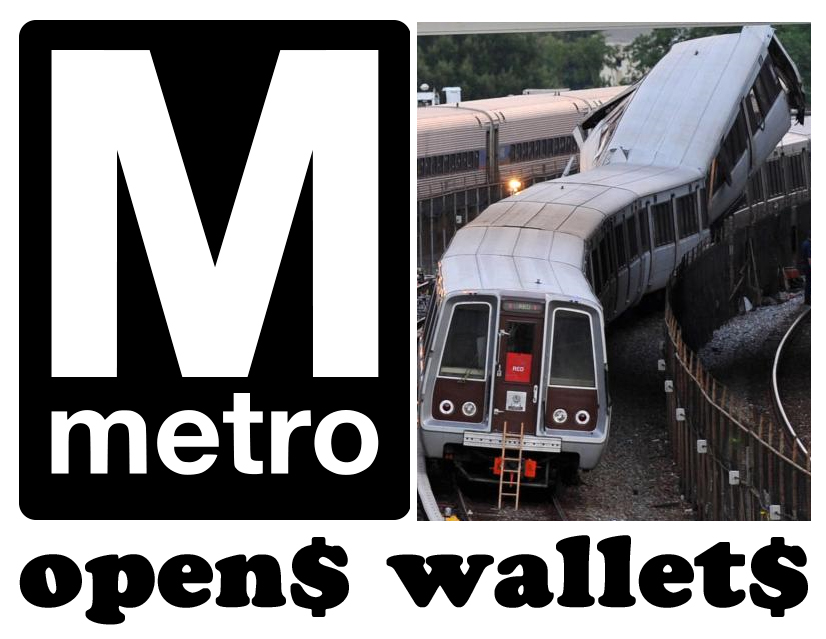
|
||
| FLATLINE | ||
Metro Opens Wallets
10¢ Fare Increase Just the Beginning
|
(Washington, DC) — March 1, 2010 seemed like a normal day on Washington's Metro. Trains were overcrowded, graffiti-laden and newspaper-strewn. "Rush hour" trains ran intermittently, if at all. The floor tiles on the outdoor platforms were cracked, weathering and slippery. Indoor platforms were dank, dark and musty; while water dripped slowly from the ceiling onto the tracks at some stations, it freely cascaded down the station walls at others. Multiple elevators and escalators remained out of service. And the threat of more deaths, derailments, delays and associated mayhem followed every passenger through the 106-mile system. The difference? The cost. To close a $40 million budget shortfall, it now costs an additional 10¢ for the semblance of normalcy. "We regret having to raise our fares," said a Metro spokesman, speaking on condition of anonymity. "We don't enjoy applying a surcharge for subpar service, though many of us enjoy actually getting away with doing so. Passengers have to understand that there's a great cost associated with killing people, and as more and more customers meet their demise, the cost of traveling Metro will rise. Ooo, that's catchy!" Metro experienced a number of fatalities in 2009, most notably the accident of June 22, which cost Metro $25.5 million in damaged track and destroyed railcars; it also cost nine people (eight passengers and one conductor) their lives and injured 80. Another fare increase could be coming sooner rather than later; Metro faces a budget shortfall of $189 million for its next fiscal year, which begins July 1. |
 |
Metro Opens Wallets: 10¢ Fare Increase Just the Beginning. FLATLINE 2010 Mar-Apr;12(3-4):e6.




